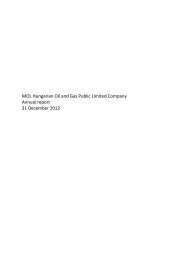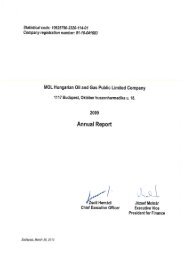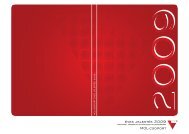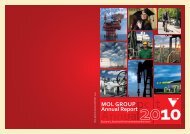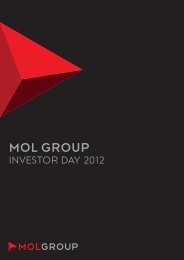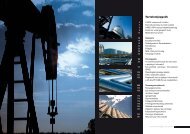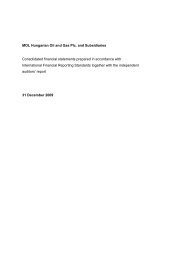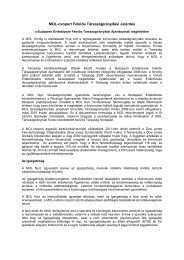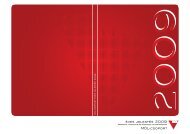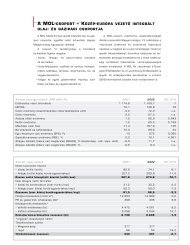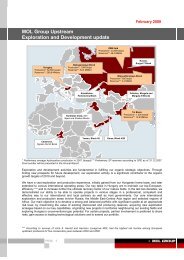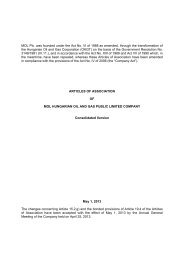DOCUMENTS FOR THE ANNUAL GENERAL MEETING
DOCUMENTS FOR THE ANNUAL GENERAL MEETING
DOCUMENTS FOR THE ANNUAL GENERAL MEETING
Create successful ePaper yourself
Turn your PDF publications into a flip-book with our unique Google optimized e-Paper software.
MOL Plc. Annual General Meeting 2013 Documents<br />
Integrated corporate risk management function<br />
The aim of MOL Group Risk Management is to deal with challenges of the external environment to<br />
support a stable and sustainable financial position of the company. MOL Group has developed risk<br />
management function as an integral part of its corporate governance structure.<br />
Incorporation of the broadest variety of risks into one long-term, comprehensive and dynamic<br />
system is arranged by Enterprise Risk Management (ERM) on group level. ERM integrates financial<br />
and operational risks along with a wide range of strategic risks, also taking into consideration<br />
compliance issues and potential reputation effects. The ERM process identifies the most significant<br />
risks to the performance of the company. Risks are assessed based on a unified methodology and<br />
collected into risk maps at different levels. Risk responses and controls are reviewed and mitigation<br />
actions set and reviewed for completion regularly by top management.<br />
The main risk drivers of the Group are the following:<br />
• Commodity price risk: MOL is exposed to commodity price risk on both the purchasing side and<br />
the sales side. The main commodity risks stem from long crude oil position to the extent of its<br />
group level production, long refinery margin position to the extent of the refined product<br />
volumes and long petrochemical margin position. Investors buying oil companies’ share are<br />
generally willing to take the risk of oil business so commodity price risk should not be fully<br />
eliminated from the cash flow. However, commodity hedge deals are considered to eliminate<br />
risks other than ‘business as usual’ risks or general market price volatility.<br />
• Foreign Exchange (FX) risk: Business operation is economically driven mainly by USD. The overall<br />
operating cash flow exposure of the Group is net long USD, EUR, RON, and net short HUF, HRK,<br />
RUB from economic point of view. According to MOL’s current FX risk management policy the<br />
long FX exposures of the operating cash flow are decreased by the short financing cash flow<br />
exposures.<br />
• Regulatory risk: Due to the economic crisis the risk of potential government actions increased as<br />
well as potential impact of such decisions.<br />
• Country risks: The internationally extending portfolio requires the proper management of<br />
country risk exposures. Country exposures are monitored to enhance the diversification effect in<br />
the investment portfolio.<br />
• Drilling risks: The uncertainty related to drilling success is a typical business risk in the<br />
exploration activity.<br />
• Equipment breakdown: Due to the high asset concentration in Downstream business it is a<br />
significant risk driver. The potential negative effects are mitigated besides comprehensive HSE<br />
activities through a Group wide insurance management program.<br />
• Market demand uncertainties: External factors like drop in market demand can affect MOL’s<br />
results negatively.<br />
• Reputation risk: Reputation of energy industry players has been in the focus of media for the<br />
past years due to extreme negative events (e.g. BP oil spill, Fukushima nuclear accident). MOL as<br />
a major market player in the region operates under special attention from stakeholders.<br />
64/94



